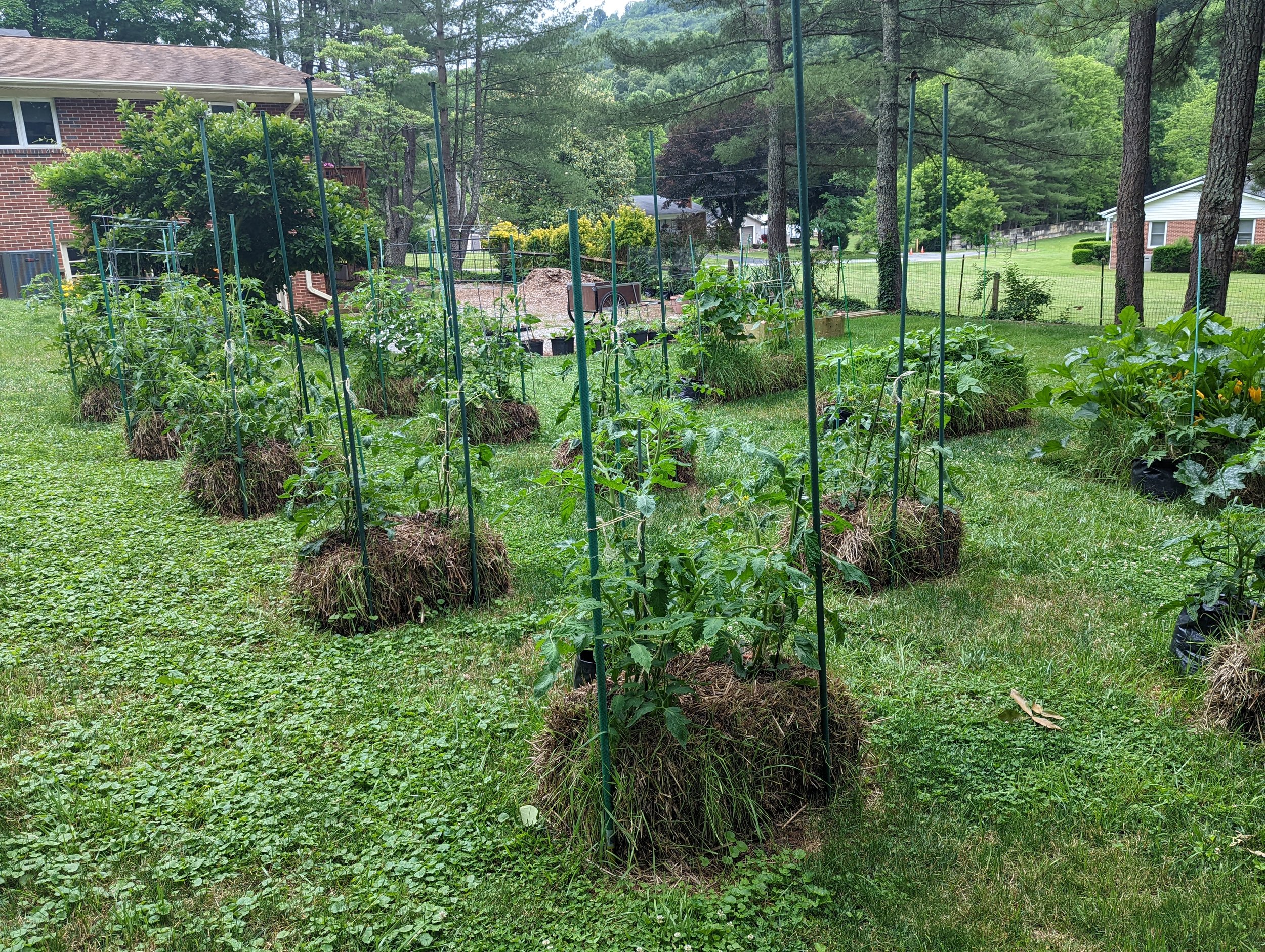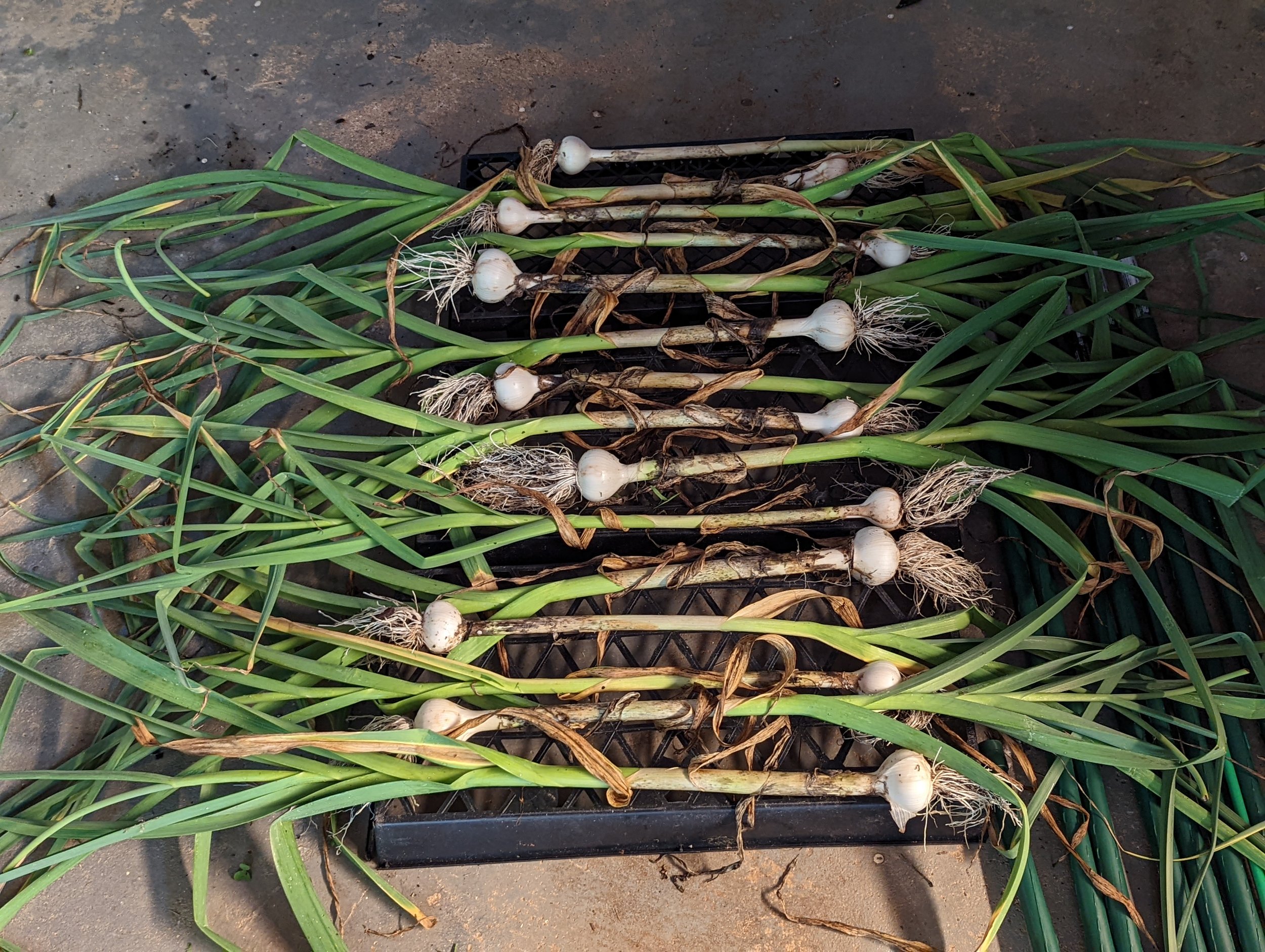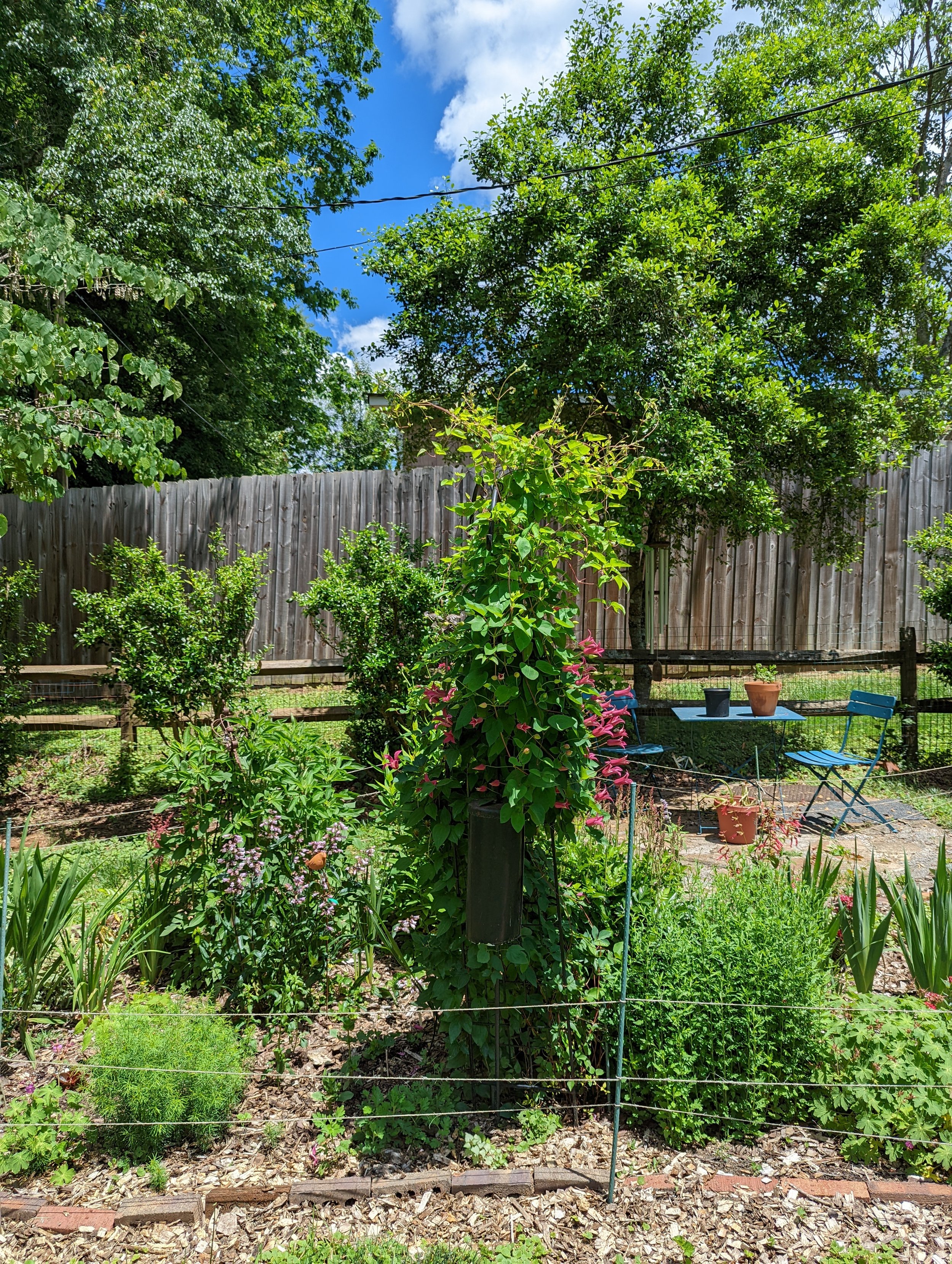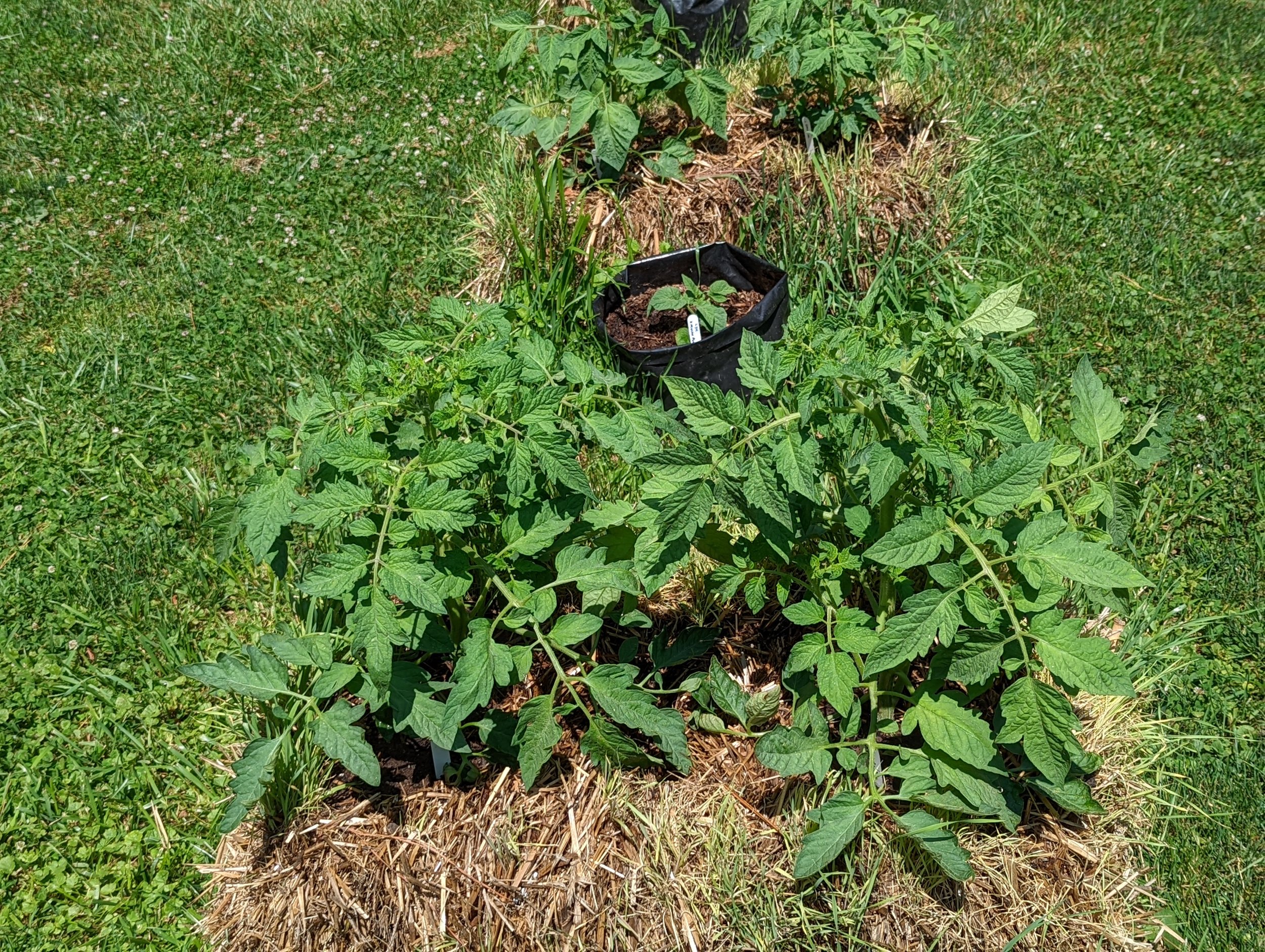Looking down the bale rows on June 8
Well, that was quite a marathon - but lots of fun to do. Talk about going down memory lane! It is remarkable to notice how rapidly my tomato collection grew. From tomato #1 in 1986, we are only in 1990 for tomato #250. Let’s see if there are any gems in this set. In a way, this is the Charlotte Mullens (a WV seed saver who sent me loads of great seeds) set of varieties, some of which have become garden staples for me.
___________________
Tomato #241 - Mortgage Lifter, Mullens - all of the tomatoes to follow except #250 were sent to me, unasked for, by a West Virginia gardener named Charlotte Mullens. She found me participating in seed swaps in various gardening magazines and shared so many treasures with me, a few having become regular stars in my garden. Charlotte told me, in a letter, that her parents (in their 70s and 80s) favored this above all other types. I have a suspicion that this is the Estler strain based on location and dates. The plant is enormous, the tomatoes the same - big to huge pink things, delicious and sweet. I am growing this year. One oddity is that a few chartreuse foliaged plants seem to always show up in a planting. They produce huge pink tomatoes, but the plant “stretches” even taller than the parent strain. This tomato is spectacular.
Tomato #242 - West Virginia - I actually did grow this tomato out once, in 1997. The regular leaf plants produced large golden orange oblate tomatoes with a typically mild flavor - it was similar to Goldie, Dr. Wyche’s Yellow and Persimmon. I’ve not grown it since - and I don’t know its history.
Tomato #243 - Transparent - This oddball was sent by Hester Haitez to Charlotte Mullens - I suspect is is one of the old “Peach” type tomatoes. The indeterminate plants produce lots of round, golf ball sized slightly fuzzy, matte skinned tomatoes with a very sweet, mild flavor. It is more of a curiosity than anything else. I suspect it is “Yellow Peach”, listed for many years in American seed catalogs of the 1800s.
Tomato #244 - Big Sandy - I feel so badly that I’ve not grown this in many years. Though some catalogs list it as a large pink, for me, the regular leaf plants produced very large, smooth oblate scarlet red tomatoes with a delightful old-fashioned flavor. I suspect that this is essentially similar to the old “Crimson Cushion” or “Beefsteak” tomatoes offered in the late 1800s. I need to contact some SSE members and obtain some live seeds so I can grow it once more.
Tomato #245 - Belgiam - clearly a misspelling happened somewhere along the line. I grew it once, and the large regular leaf indeterminate plant produced large oblate pink tomatoes with a mild flavor that I did not fall in love with. I’ve no idea of its history.
Tomato #246 - Bilder - Apparently, this variety originated in the 1800s in Asia - ended up in the hands of Dick Deason of Michigan, who received it from his neighbor, Jack Bilder. When I received it from Charlotte, it has crossed - the regular leaf plant gave variably shaped, medium scarlet tomatoes of no great assets. I did receive it from someone else years later, and it did give the proper potato leaf plant with large pink fruits.
Tomato #247 - Armenian - Charlotte received this from someone in Armenia - then passed it along to me. The regular leaf plants produced typical large oblate yellow/red beefsteaks with the expected peachy texture and flavor. I noted it as very similar to Ruby Gold.
Tomato #248 - Gallo Plum - I really love this tomato, a very similar type to Opalka. Charlotte received seeds from Joe Horan, then passed them on to me. The tall indeterminate plant has very wispy foliage typical of the plum types. The tomatoes look more like long frying peppers - 2 inches wide, 6 inches long, scarlet, meaty and very tasty. This is probably my second favorite indeterminate sauce type, just behind Speckled Roman.
Tomato #249 - Giant Syrian - This tomato was a star in my 2021 garden. Charlotte received seeds from Harold DeRhodes of Ohio. What makes this tomato special is that it is a rare scarlet red oxheart type. The wispy foliage makes the plant look unhealthy and weak, but it is just the genetics of the variety at play. The tomatoes can reach more than 2 pounds, and are simply delicious.
Tomato #250 - Pink Delight - Barney Laman sent me some F2 seeds from the hybrid Pink Delight. I grew one plant and found it to be regular leaf, indeterminate, with medium sized pink tomatoes that didn’t have outstanding flavor or other merits.
_____________________
What a nice set of tomatoes this is, and a fine way to end the first part of my tour - we will pick it up again this fall. I can’t imagine many gardens without Mullens Mortgage Lifter, Giant Syrian or Gallo Plum!
When we return to my seed collection tour, probably in September, some highlights to come are Mexico Midget (#251), Pink Sweet (#274), Cherokee Purple (#287), Potato Leaf Yellow (#332), and Yellow Brandywine (#333).
First half of the garlic harvest, curing on June 7

























